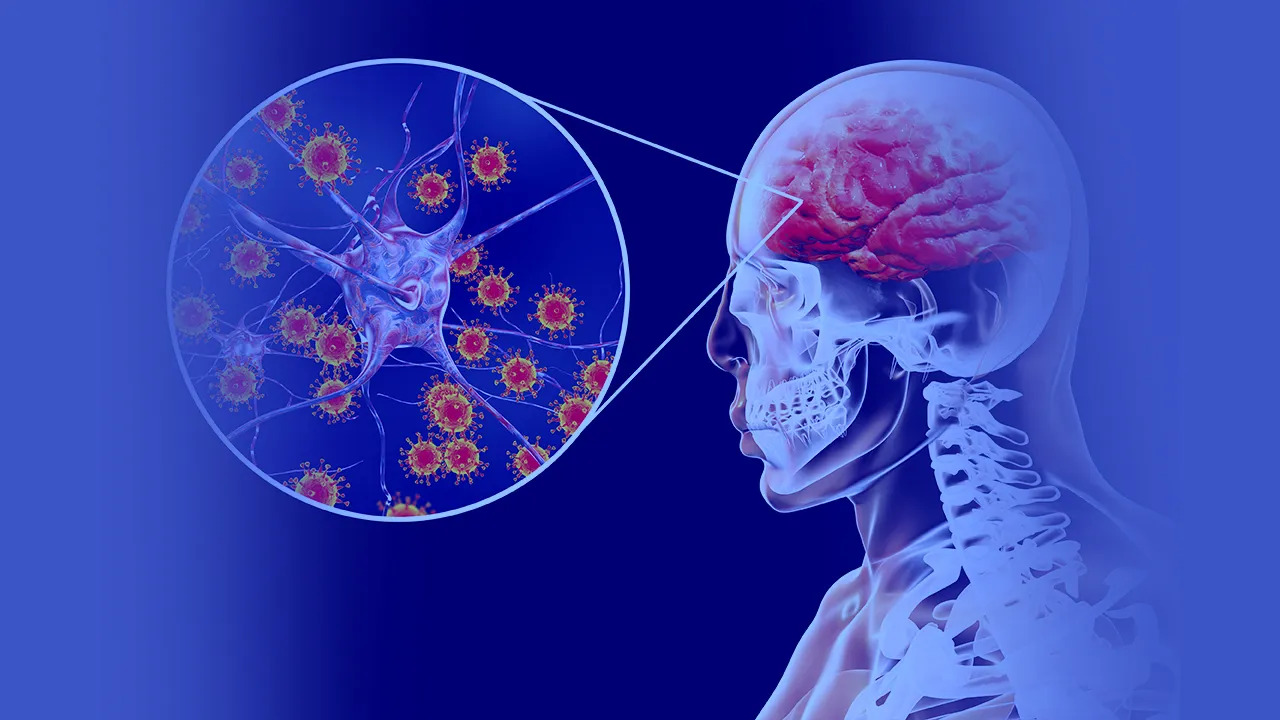Herpes simplex virus encephalitis (HSVE) is a severe but rare neurological condition caused by the herpes simplex virus (HSV). It is the most common cause of sporadic encephalitis in adults and is associated with significant morbidity and mortality.
HSVE is a rare disease, with an estimated incidence of 1 in 250,000 to 500,000 individuals annually. It affects all age groups, but the incidence is highest in adults over 50 years. There is no gender or racial predilection for HSVE. In addition, the disease is more common in immunocompromised individuals, such as those with HIV/AIDS, organ transplant recipients, and patients receiving immunosuppressive therapy.
HSV-1 and HSV-2. HSV-1 is the most common cause of HSVE, accounting for approximately 90% of cases. HSV-2 is a less common cause of HSVE and is usually associated with genital herpes.
The pathogenesis of HSVE is not fully understood, but it is believed that the virus gains access to the central nervous system (CNS) through the olfactory or trigeminal nerve. Once in the CNS, the virus replicates in neurons and glial cells, leading to inflammation and necrosis of the brain tissue. In addition, the immune response to the virus also contributes to the pathogenesis of HSVE, with the release of cytokines and chemokines leading to further damage to the brain tissue.
The clinical presentation of HSVE can vary widely, but the most common symptoms include fever, headache, altered mental status, seizures, and focal neurological deficits. The onset of symptoms is usually rapid, with most patients developing symptoms within 1-2 weeks of infection.
The initial symptoms of HSVE are often non-specific and can be mistaken for other conditions, such as meningitis or encephalitis, caused by different viruses. However, as the disease progresses, patients may develop more specific symptoms, such as aphasia, hemiparesis, or visual disturbances.
The diagnosis of HSVE is based on a combination of clinical features, laboratory tests, and imaging studies. The standard for diagnosis is the detection of HSV DNA in the cerebrospinal fluid (CSF) by polymerase chain reaction (PCR). However, other laboratory tests, such as serology and viral culture, are less sensitive and specific than PCR.
Imaging studies, such as magnetic resonance imaging (MRI) and computed tomography (CT), can also be helpful in the diagnosis of HSVE. MRI is more sensitive than CT and can detect early changes in the brain tissue, such as edema and hemorrhage.
The management of HSVE involves antiviral therapy, supportive care, and the management of complications. The antiviral drug of choice for HSVE is acyclovir, given intravenously for 14-21 days. Therefore, early initiation of antiviral therapy is crucial for improving outcomes in HSVE.
Supportive care includes managing seizures, maintaining fluid and electrolyte balance, and preventing secondary infections. In addition, patients with HSVE may require intensive care unit (ICU) admission for close monitoring and management of complications.
Complications of HSVE can include cerebral edema, hydrocephalus, and secondary bacterial infections. These complications can be managed with appropriate medical and surgical interventions.
The prognosis of HSVE depends on several factors, including the age and immune status of the patient, the severity of the disease at presentation, and the promptness of initiating antiviral therapy. Mortality rates for HSVE range from 10% to 30%, with higher rates in older adults and immunocompromised individuals. Survivors of HSVE may experience long-term neurological deficits, such as cognitive impairment, seizures, and motor deficits.
HSVE is a rare but serious neurological condition caused by the herpes simplex virus. Early recognition and prompt initiation of antiviral therapy are crucial for improving outcomes in HSVE. Unfortunately, the clinical presentation of HSVE can be non-specific, and a high index of suspicion is required for diagnosis. Management of HSVE involves antiviral therapy, supportive care, and management of complications. Despite advances in managing HSVE, the disease remains associated with significant morbidity and mortality.

Comments are closed.